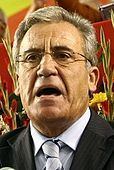September/October 2017 2021 → 106 mayors, 31.4% 34 mayors, 11.1% | 150 mayors, 36.7% 106 mayors, 31.4% Location Portugal | |
 | ||
The Portuguese local elections of 2017 will take place in late September or early October of 2017. The elections consists of three separate elections in the 308 Portuguese municipalities, the election for the Municipal Chambers, whose winner is elected mayor, another election for the Municipal Assembly, as well as an election for the lower-level Parish Assembly, whose winner is elected parish president. This last election will be held in the more than 3,000 parishes around the country.
Contents
Electoral system
All 308 municipalities are allocated a certain number of councilors to elect corresponding to the number of registered voters in a given municipality. Each party or coalition must present a list of candidates. The lists are closed and the seats in each municipality are apportioned according to the D'Hondt method. Unlike in national legislative elections, independent lists are allowed to run.
Council seats and Parish assembly seats are distributed as follows:
Parties
The main political forces that will be involved in the election are:
1 The PSD and the CDS–PP will also form coalitions in several municipalities with the Earth Party (MPT) and the People's Monarchist Party (PPM).
Opinion polling
A Survey where voters were first asked on which party or coalition they would vote and secondly, which candidate would they cast their ballot.
